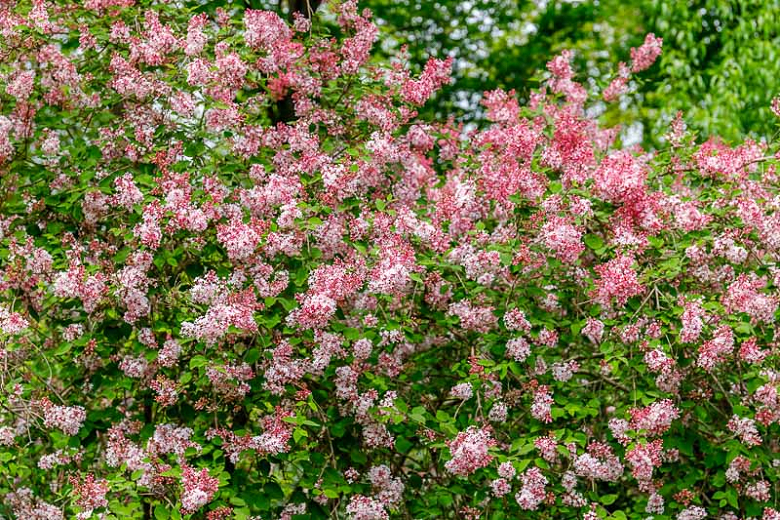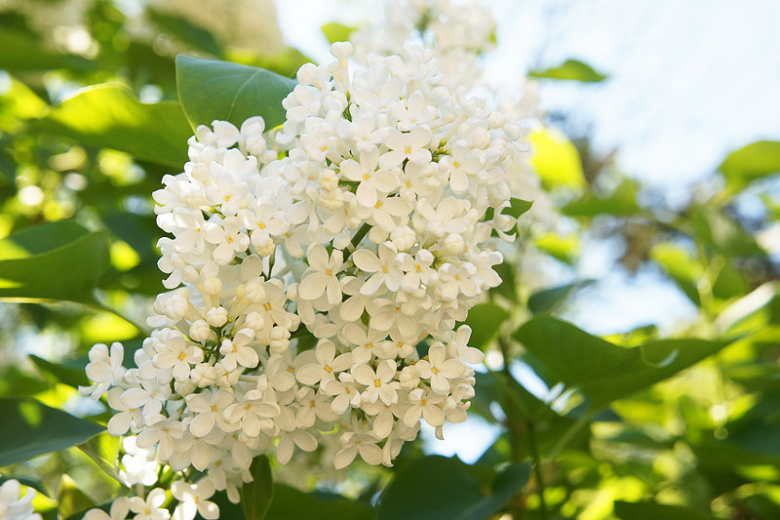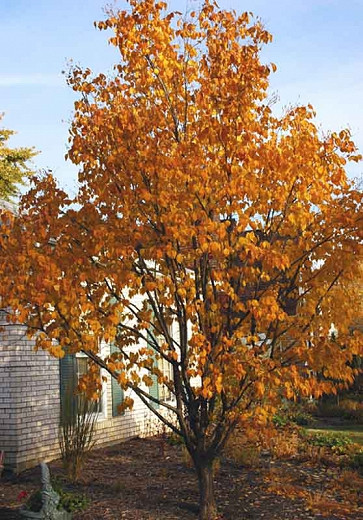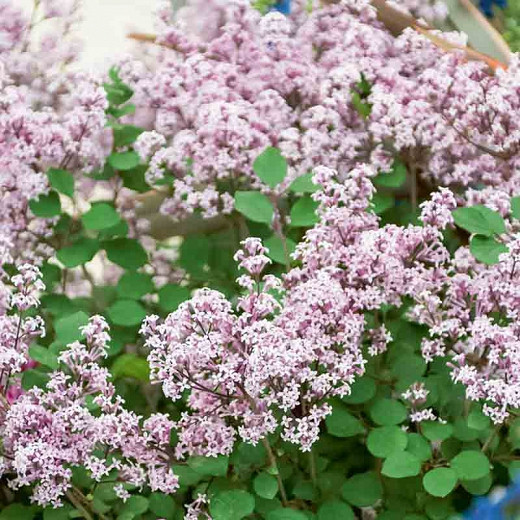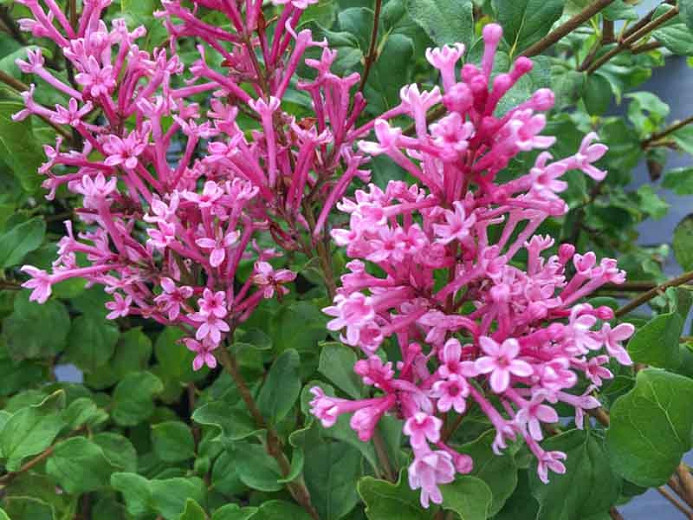Syringa Josee (Reblooming Lilac)
Syringa 'Josee' is a dwarf, reblooming lilac of compact, rounded habit. Heavenly-scented, star-like lavender-pink flowers are on display over a long season. Blooming massively in late spring, the blossoms are so profuse that they literally cover the shrub. After a rest period to put on new growth, they repeat bloom sporadically through fall. Repeat flowering is best in cool climates. This cultivar’s sporadic late-season blooms never equal its profuse spring landscape display, but do offer sufficient flowers to cut for floral arrangements. Will thrive in warmer zones, though southern gardens may only get a flush of rebloom in the fall. The branches are clothed in rich green, broadly ovate, small leaves that remain attractive in summer. This reblooming lilac is perfect for foundation plantings, mixed borders, and small gardens.
- Grows up to 4-6 ft. tall (120-180 cm) and 5-6 ft. wide (150-180 cm).
- A full sun lover, this plant is easily grown in fertile, humus-rich alkaline to neutral, moist, well-drained soils. Thrives in chalky ground and appreciates mulching when planted in full sun. Needs good air circulation.
- No serious insect or disease problems. May get leaf-mining moths, thrips, or be affected by lilac blight
- Attracts butterflies and hummingbirds but is deer resistant.
- Plant as a specimen or massed in mixed shrub borders for dramatic spring blooms. Use it in the perennial border to add structure to a bed. A great flowering shrub that is perfect for foundation plantings or hedges.
- For the best rebloom, it is vital that the plant grows vigorously during late spring and early summer. Do this by keeping it well-watered and mulched and in plenty of sun (six hours a day at least). If you wish to fertilize it, you may do so in early spring, once the ground has thawed, and again in late spring, after it blooms. If you want to prune your lilac, do so immediately after its spring bloom. Never cut it back in fall, winter, or early spring – doing so will remove the spring flower buds. It is not necessary to prune this lilac in order for it to rebloom. However, giving it a light trim after blooming does remove the developing seed heads, providing a neater look, and encourages more new growth for reblooming. Trimming after blooming will delay the rebloom by a few weeks compared to an untrimmed lilac.
Requirements
| Hardiness | 3 – 7 |
|---|---|
| Heat Zones | 1 – 8 |
| Climate Zones | 1, 1A, 1B, 2, 2A, 2B, 3, 3A, 3B, 4, 5, 6, 7, 8, 9, 10, 11, 14, A1, A2, A3 |
| Plant Type | Shrubs |
| Plant Family | Syringa – Lilacs |
| Exposure | Full Sun |
| Season of Interest | Spring (Late)Summer (Early,Mid,Late)Fall |
| Height | 4' – 6' (120cm – 180cm) |
| Spread | 5' – 6' (150cm – 180cm) |
| Spacing | 60″ – 72″ (150cm – 180cm) |
| Water Needs | Average |
| Maintenance | Low |
| Soil Type | Chalk, Clay, Loam, Sand |
| Soil pH | Alkaline, Neutral |
| Soil Drainage | Moist but Well-Drained, Well-Drained |
| Characteristics | Cut Flowers, Fragrant, Showy |
| Tolerance | Clay Soil, Deer |
| Attracts | Butterflies, Hummingbirds |
| Garden Uses | Beds and Borders, Hedges and Screens |
| Garden Styles | City and Courtyard, Informal and Cottage, Traditional Garden |

